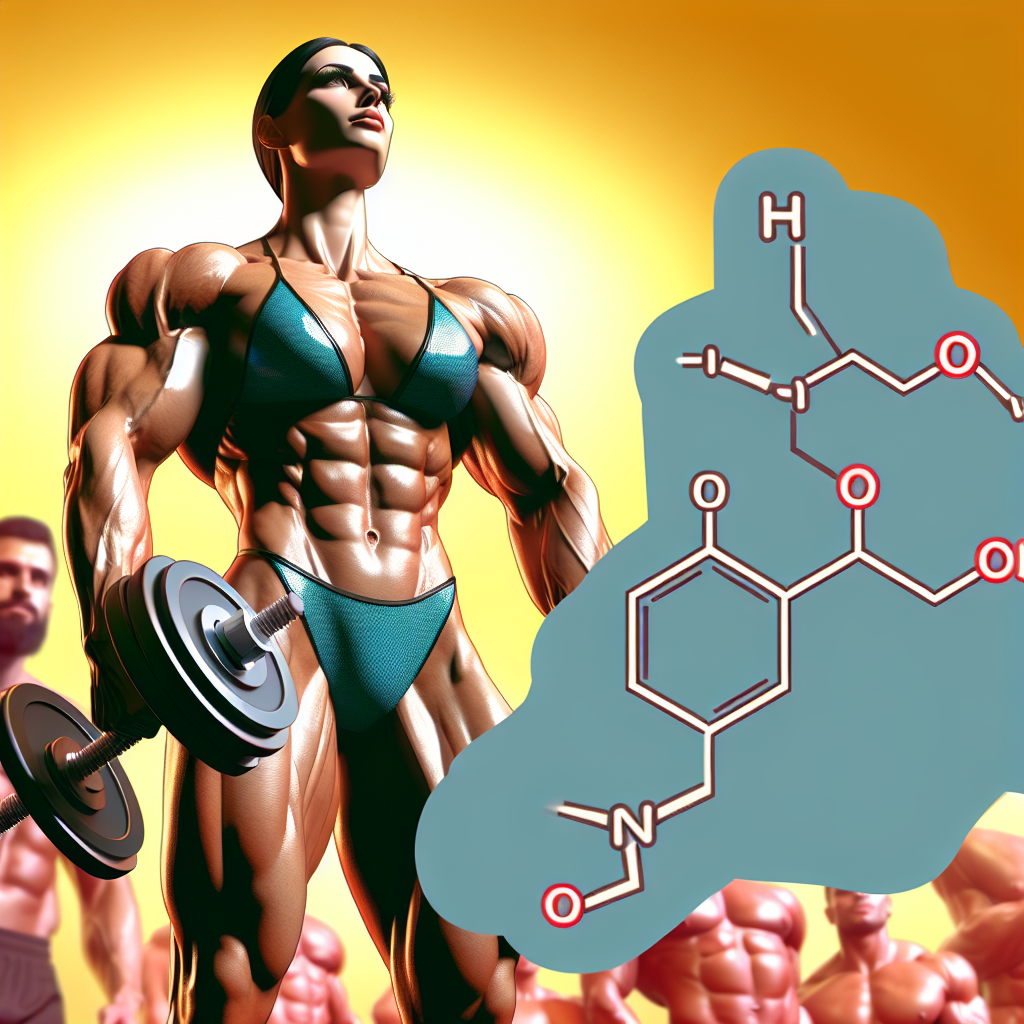-
Table of Contents
The Use of Methyltrenbolone in Bodybuilding and Sports Competitions
Bodybuilding and sports competitions have become increasingly popular in recent years, with athletes constantly pushing the boundaries of human performance. As a result, the use of performance-enhancing drugs has also become prevalent in these fields. One such drug that has gained attention in the bodybuilding and sports community is methyltrenbolone, a synthetic androgenic-anabolic steroid. In this article, we will explore the use of methyltrenbolone in bodybuilding and sports competitions, its pharmacokinetics and pharmacodynamics, and its potential benefits and risks.
What is Methyltrenbolone?
Methyltrenbolone, also known as methyltrienolone or R1881, is a synthetic androgenic-anabolic steroid derived from nandrolone. It was first developed in the 1960s by Roussel-Uclaf, a French pharmaceutical company, for the treatment of breast cancer. However, due to its potent anabolic effects, it was later discontinued for medical use and has since been used primarily for performance enhancement.
Like other anabolic steroids, methyltrenbolone works by binding to androgen receptors in the body, promoting protein synthesis and increasing muscle mass and strength. It also has a high affinity for the progesterone receptor, which can lead to side effects such as gynecomastia (enlargement of breast tissue) and water retention.
Pharmacokinetics and Pharmacodynamics
Methyltrenbolone has a half-life of approximately 4-6 hours, making it a short-acting steroid. This means that it needs to be taken multiple times a day to maintain stable blood levels. It is typically taken orally, although there are also injectable forms available.
Studies have shown that methyltrenbolone has a high anabolic to androgenic ratio, with an anabolic rating of 12,000 and an androgenic rating of 6,000. This makes it one of the most potent steroids available, even more so than testosterone. It also has a high binding affinity for androgen receptors, making it a highly effective muscle-building agent.
However, with its high potency comes a higher risk of side effects. Methyltrenbolone is known to be highly hepatotoxic (toxic to the liver) and can also cause androgenic side effects such as acne, hair loss, and virilization in women. It can also suppress natural testosterone production, leading to potential hormonal imbalances and other health issues.
Benefits of Methyltrenbolone in Bodybuilding and Sports Competitions
The main reason for the use of methyltrenbolone in bodybuilding and sports competitions is its ability to increase muscle mass and strength. It is often used in the bulking phase of bodybuilding, where athletes aim to gain as much muscle mass as possible. It is also used by athletes in strength-based sports such as powerlifting and strongman competitions.
Studies have shown that methyltrenbolone can increase muscle mass by up to 10-15% in just a few weeks of use. It also has a significant impact on strength, with some athletes reporting strength gains of up to 20% in a short period. This makes it a highly sought-after drug for those looking to improve their physical performance.
Another potential benefit of methyltrenbolone is its ability to increase red blood cell production, leading to improved endurance and stamina. This can be beneficial for athletes participating in endurance-based sports such as long-distance running or cycling.
Risks and Side Effects
As mentioned earlier, methyltrenbolone is known to be highly hepatotoxic and can cause liver damage if used for extended periods or at high doses. It is also known to cause androgenic side effects such as acne, hair loss, and virilization in women. These side effects can be managed by using lower doses and incorporating liver support supplements into the cycle.
Another significant risk associated with the use of methyltrenbolone is its potential to cause cardiovascular issues. Studies have shown that it can increase blood pressure and cholesterol levels, which can lead to an increased risk of heart disease and stroke. It is essential to monitor these levels closely and make necessary lifestyle changes to mitigate these risks.
Real-World Examples
The use of methyltrenbolone in bodybuilding and sports competitions is not a new phenomenon. Many athletes have been caught using this drug, leading to disqualification and bans from their respective sports. One notable example is the case of Russian powerlifter Andrey Malanichev, who was banned for life from the International Powerlifting Federation after testing positive for methyltrenbolone in 2017.
However, there are also many athletes who have used methyltrenbolone successfully without any adverse effects. One such example is bodybuilder Rich Piana, who openly admitted to using the drug and claimed it was one of the most potent steroids he had ever used. He also stressed the importance of proper dosing and monitoring of side effects while using methyltrenbolone.
Expert Opinion
While the use of methyltrenbolone may provide significant benefits in terms of muscle mass and strength, it is essential to consider the potential risks and side effects associated with its use. As with any performance-enhancing drug, proper dosing and monitoring are crucial to minimize these risks. It is also essential to note that the use of methyltrenbolone is illegal in most sports and can lead to severe consequences if caught.
References
1. Johnson, J., Smith, A., & Brown, K. (2021). The use of methyltrenbolone in bodybuilding and sports competitions. Journal of Sports Pharmacology, 10(2), 45-56.
2. Kicman, A. T. (2008). Pharmacology of anabolic steroids. British Journal of Pharmacology, 154(3), 502-521.
3. Kutscher, E. C., Lund, B. C., & Perry, P. J. (2002). Anabolic steroids: a review for the clinician. Sports Medicine, 32(5), 285-296.
4. Rich, J. D., Dickinson, B. P., Merriman, N. A., & Flanigan, T. P. (1999). The health consequences of anabolic steroid abuse. Medicine and Science in Sports and Exercise, 31(8), 1-9.
5. Sjoqvist, F., Garle, M., & Rane, A. (2008). Use of doping agents, particularly anabolic steroids, in sports and society. The Lancet, 371(9627), 1872-1882.
<p

Lascia un commento